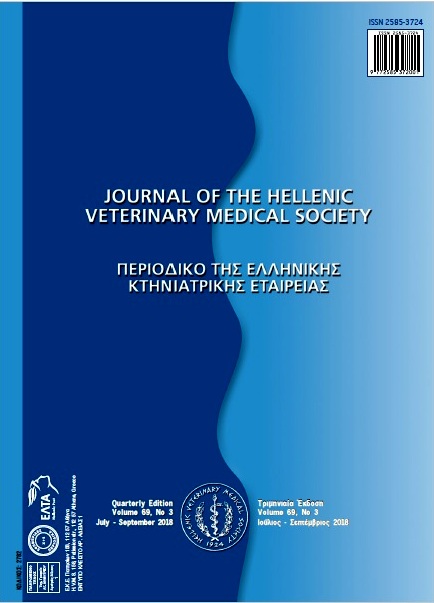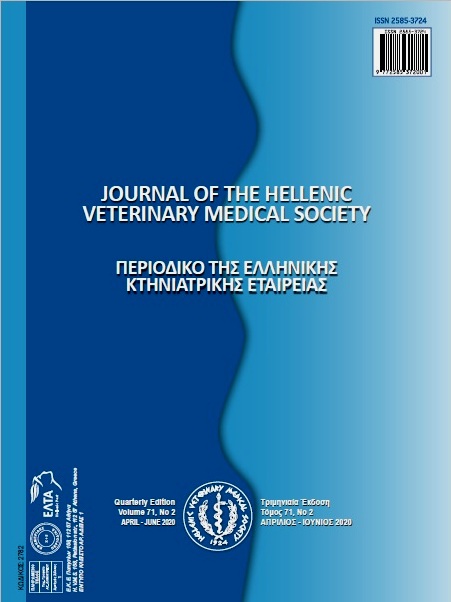Σύγκριση δύο μεθόδων παρασκευής τυριού Χαλούμι με μειωμένο λίπος από πρόβειο γάλα

Περίληψη
Το Χαλλούμι είναι ένα δημοφιλές τυρί στην Κύπρο. Tα τελευταία χρόνια στην αγορά της Κύπρου κυκλοφορεί Χαλλούμι με μειωμένο λίπος που παράγεται αποκλειστικά από αγελαδινό γάλα. Στην παρούσα μελέτη, έγινε σύγκριση δύο μεθόδων παρασκευής τυριού τύπου Χαλλούμι από πρόβειο γάλα που μειώθηκε το λίπος του στο 1,8%. Χρησιμοποιήθηκε πρόβειο γάλα γιατί είναι μεγαλύτερης βιολογικής και θρεπτικής αξίας από το αγελαδινό. Στην πρώτη, χρησιμοποιήθηκε ως μάρτυρας η παραδοσιακή τεχνολογία (Τ), ενώ στη δεύτερη, η τροποποιημένη τεχνολογία (Μ), όπως περιγράφεται στα υλικά και μέθοδοι. Το τυρί Μ είχε υψηλότερη απόδοση, περιεκτικότητα σε υγρασία και πρωτεΐνη υπολογισμένη σε ξηρή ουσία, υψηλότερη τιμή pH και χαμηλότερη περιεκτικότητα σε λίπος, λακτόζη, τέφρα, Ca, Mg, οξύτητα, σκληρότητα, συνάφεια, ελαστικότητα, πολτοποιητικότητα και μασητικότητα από το τυρί Τ. Η ομάδα οργανοληπτικής αξιολόγησης πρότεινε ότι η τεχνολογία Μ είναι καλύτερη και μπορεί να χρησιμοποιηθεί για την παραγωγή πρόβειου τυριού τύπου Χαλλούμι με μειωμένο λίπος.
Λεπτομέρειες άρθρου
- Πώς να δημιουργήσετε Αναφορές
-
KAMINARIDES, S. (2018). Σύγκριση δύο μεθόδων παρασκευής τυριού Χαλούμι με μειωμένο λίπος από πρόβειο γάλα. Περιοδικό της Ελληνικής Κτηνιατρικής Εταιρείας, 69(3), 1125–1134. https://doi.org/10.12681/jhvms.18885
- Τεύχος
- Τόμ. 69 Αρ. 3 (2018)
- Ενότητα
- Research Articles

Αυτή η εργασία είναι αδειοδοτημένη υπό το CC Αναφορά Δημιουργού – Μη Εμπορική Χρήση 4.0.
Οι συγγραφείς των άρθρων που δημοσιεύονται στο περιοδικό διατηρούν τα δικαιώματα πνευματικής ιδιοκτησίας επί των άρθρων τους, δίνοντας στο περιοδικό το δικαίωμα της πρώτης δημοσίευσης.
Άρθρα που δημοσιεύονται στο περιοδικό διατίθενται με άδεια Creative Commons 4.0 Non Commercial και σύμφωνα με την άδεια μπορούν να χρησιμοποιούνται ελεύθερα, με αναφορά στο/στη συγγραφέα και στην πρώτη δημοσίευση για μη κερδοσκοπικούς σκοπούς.
Οι συγγραφείς μπορούν να καταθέσουν το άρθρο σε ιδρυματικό ή άλλο αποθετήριο ή/και να το δημοσιεύσουν σε άλλη έκδοση, με υποχρεωτική την αναφορά πρώτης δημοσίευσης στο J Hellenic Vet Med Soc
Οι συγγραφείς ενθαρρύνονται να καταθέσουν σε αποθετήριο ή να δημοσιεύσουν την εργασία τους στο διαδίκτυο πριν ή κατά τη διαδικασία υποβολής και αξιολόγησής της.



